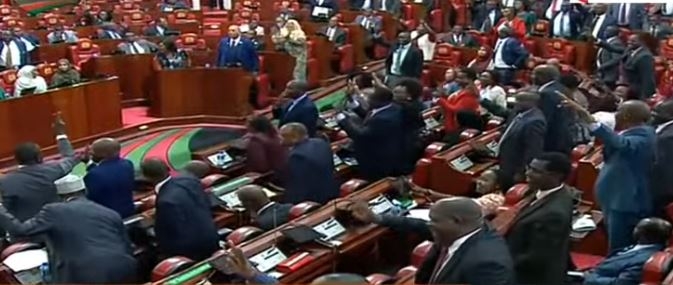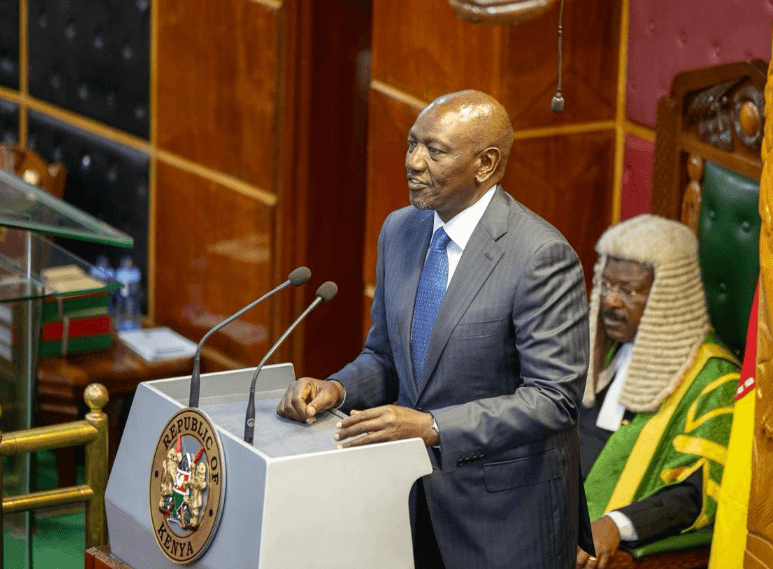Central banks in Africa have been asked to lower bank rates to ease flow of money to small businesses that brew 70 per cent of new jobs.
Apex bank governors' session at the ongoing Africa Development Bank (AfDB) annual general meet in Nairobi noted that high cost of credit is hurting the private sector, with most businesses restructuring or closing shop.
AfDB President Akinwumi Adesina said the recurring and overlapping global shocks, alongside the rapidly widening financing gaps, highlight the pressing need for African countries to refocus their attention on structural transformation to build more resilient economies.
"This imperative arises amidst a global financial system characterised by declining concessional resources for development and increasing non-concessional resources due to rising interest rates,'' he said.
Although increased private consumption and declining inflation are supporting an economic rebound in Sub-Saharan Africa, apex bank governors agree that softer bank rates will accelerate the growth beyond a 2023 rebound of 3.4 per cent growth.
Last month, the World Bank Pulse noted that the recovery remains fragile due to uncertain global economic conditions; growing debt service obligations, frequent natural disasters, and escalating conflict and violence.
The global lender called for transformative policies to address deep-rooted inequality to sustain long-term growth and effectively reduce poverty.
The report projects that growth will rebound in 2024, rising from a low of 2.6 per cent in 2023 to 3.4 per cent in 2024, and 3.8 per cent in 2025.
The governors' session concluded that while inflation is cooling across most economies, falling from a median of 7.1 to 5.1 per cent in 2024, it remains high compared to pre-Covid-19 pandemic levels.
Additionally, while growth of public debt is slowing, more than half of African governments grapple with external liquidity problems, and face unsustainable debt burdens.
Worries over inflation and depreciation of local currencies have been at the centre-stage of influencing monetary policy decisions among regional central banks.
Continued attacks in the Red Sea, through which 11 per cent of global trade flows, and the ongoing war in Ukraine provide new inflationary threats, with the risk of generating fresh adverse supply shocks to the global economic recovery too.
Most central banks in the region have been keen on anchoring inflation expectations to reduce the cost of living, with some like Kenya pushing the base lending rate to a 12-year high.
CBK undertook two consecutive raises of the benchmark interest rate in December and February, setting the Central Bank Rate (CBR) at 13 per cent from 10.5 per cent, with the primary goal of cushioning the shilling by attracting foreign exchange flows into local investments such as government securities.
"A key risk to inflation is international oil prices, which have trended upwards since January 2024 largely driven by disruptions to shipping through the Red Sea, and production cuts by Opec+ and other allied oil producers,” Kamau Thugge, the governor of the Central Bank of Kenya (CBK) said.
Early last month, the Bank of Uganda (BoU) further increased its CBR to 10.25 per cent from 10 per cent in March.
“The weakening of the shilling significantly impacts domestic prices which could push inflation higher. The evolution of inflation remains challenging, influenced by factors such as the shilling exchange rate, supply side shocks, global inflation, and domestic food supply,” the bank’s deputy governor Michael Atingi-Ego said.
The National Bank of Rwanda (NBR), whose key interest rate stands at 7.5 per cent, is expected to review its policy stance but it has warned that several potential risks, including the Red Sea crisis could affect the inflation outlook.
Last year, NBR continued the monetary policy tightening cycle to curb inflationary pain.
The bank increased the policy rate by 100 basis points to reach 7.5 per cent, resulting in a cumulative increase of 300 basis points since February 2022.
Notably, developed markets in the region like South Africa have started to go slow of monetary stances, with the South African Reserve Bank (SARB) keeping its main interest rate unchanged in the latest review.
The repo rate remained unchanged at 8.25 per cent.
The cost of living in the South African nation is expected to reach the midpoint of its target range - 4.5 per cent- only at the end of 2025, later than previously forecast.














![[PHOTOS] Betty Bayo laid to rest in Kiambu](/_next/image?url=https%3A%2F%2Fcdn.radioafrica.digital%2Fimage%2F2025%2F11%2F3b166e2e-d964-4503-8096-6b954dee1bd0.jpg&w=3840&q=100)


